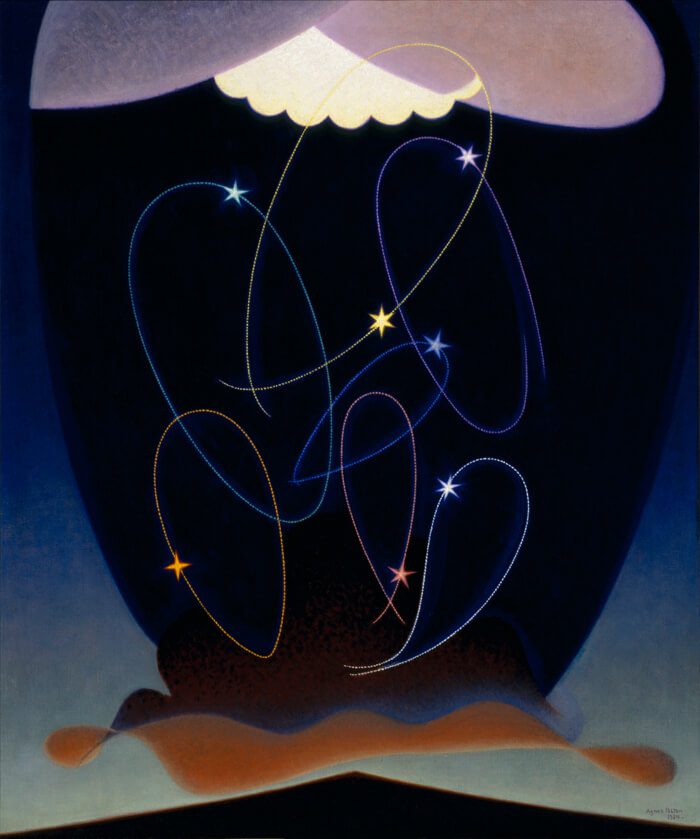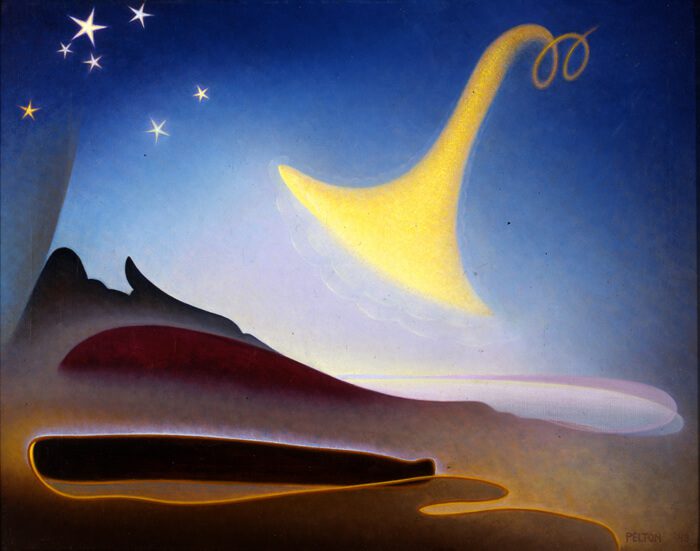
Agnes Pelton: Desert Transcendentalist
October 5, 2019–January 5, 2020
New Mexico Museum of Art, Santa Fe
2019 is a memorable year for art history revisions to early modernism in painting, first with the thunderclap of Hilma af Klint’s survey at the Guggenheim (whose mystical abstract work predates Kandinsky) and now with the sorely under-recognized American artist, Agnes Pelton, who shares deep interests in abstraction and theosophy with af Klint. The Pelton survey, organized by the Phoenix Art Museum, and at my count some forty-four paintings, fills the galleries with an aura of contemplation and warmth so dense I could feel myself wading through it. “There’s a clear sense of ascension embedded in so many of these paintings,” said my friend after circling back at the reception. Pelton’s paintings are first characterized by a softly glowing luster of color gradients that suggests an atmospheric perspective that is consistently dialed to dawn or the twilight moments of the sun’s final reach across the terrain.

The paintings—embedded with symbols of fire, lotus flowers, garlands, and frequently stars—are grounded by specific biomorphic landscape formations, like desert ridge lines and teardrop pools. Interval (1950) veers abruptly from a landscape tradition into a far more complex structure of a central weightless and shimmering opalescent orb that conjures Tantric paintings intended for meditation. The orb is internally illuminated and hovers in front of sheets of other organic shapes that, in flux, seem to materialize and disintegrate simultaneously. Pelton’s dense layering of prismatic hues tinted to the point of iridescence, found in many works in this show, is mind altering. Her final work, Light Center (1960-61), is a minimal night scene of soft violets, lavenders, and russets with a central column of light opening a passage through which even brighter stacked ovals suggest a portal to another realm. Godspeed, Agnes Pelton.




